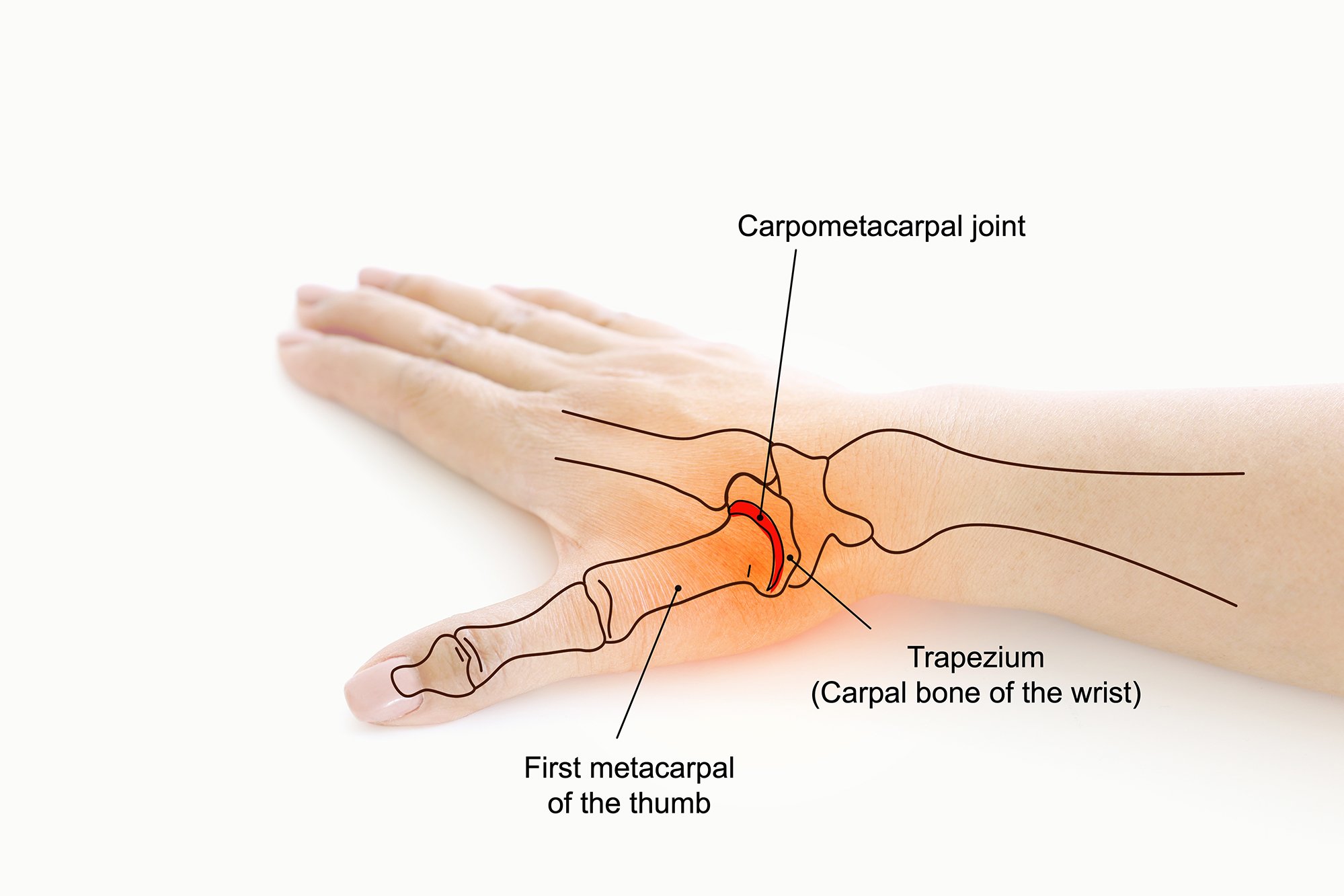Mysteries of Thumb Arthritis Mys
Thumb arthritis is a condition that can significantly impact your daily life. If you’re experiencing thumb pain, stiffness, or swelling, it’s crucial to understand what’s happening and how to address it effectively. In this comprehensive guide, we will delve into the world of “thumb arthritis,” providing insights into its causes, symptoms, and available treatment options. By the end of this article, you’ll be well-equipped with knowledge to tackle thumb arthritis and regain control over your thumb’s functionality.
Understanding Thumb Anatomy
The Blueprint of Thumb Functionality
Before we explore thumb arthritis further, let’s start with the basics. Understanding the anatomy of the thumb is key to comprehending how arthritis affects this essential digit. The thumb is not just another finger; it plays a pivotal role in various daily activities, from grasping objects to providing fine motor control. In this section, we’ll dissect the intricate anatomy of the thumb, emphasizing its importance in your daily life.

Types of Thumb Arthritis
Unveiling the Varieties of Thumb Arthritis
Thumb arthritis is not a one-size-fits-all condition. It manifests in various forms, each with its unique characteristics and challenges. To provide you with a comprehensive understanding, we’ll explore the three primary types of thumb arthritis:
Osteoarthritis (OA) of the Thumb:
The most common type, is often associated with aging and wear-and-tear of the joint.
Rheumatoid Arthritis (RA) Affecting the Thumb:
An autoimmune disease that can target the thumb joints and cause inflammation.
Basal Joint Arthritis:
A specific form of OA that affects the basal joint at the base of the thumb, causing significant pain and limitations.
Causes and Risk Factors
Unearthing the Origins of Thumb Arthritis
Thumb arthritis doesn’t develop overnight; it often results from a combination of factors. To gain a clearer perspective on this condition, let’s delve into its root causes and risk factors:
Factors Contributing to Thumb Arthritis:
Age and Wear:
As we age, the cartilage in our thumb joints naturally deteriorates, making them more susceptible to arthritis.
Genetic Predisposition:
Family history can play a role in the development of thumb arthritis.
Overuse and Repetitive Movements:
Certain occupations or activities that involve repeated thumb movements can increase the risk.
Trauma and Injuries:
Thumb injuries, such as fractures or dislocations, can predispose individuals to arthritis.
Other Medical Conditions:
Conditions like gout or lupus may contribute to thumb arthritis.
Recognizing Symptoms
Deciphering the Language of Thumb Arthritis
Recognizing the early warning signs of thumb arthritis is crucial for seeking timely medical attention. The symptoms of thumb arthritis can vary in intensity but often include:
Common Symptoms of Thumb Arthritis:
Thumb Pain:
Persistent or intermittent pain at the base of the thumb, particularly during gripping or pinching.
Stiffness:
Difficulty in moving the thumb, especially in the morning or after periods of inactivity.
Swelling:
Visible or palpable swelling at the base of the thumb joint.
Loss of Strength:
Reduced grip strength and diminished ability to perform everyday tasks.
If you or a loved one are experiencing these symptoms, it’s essential to consult a healthcare professional for a proper diagnosis and personalized treatment plan.
Diagnosis and Evaluation
Unlocking the Thumb Arthritis Puzzle
Diagnosing thumb arthritis involves a thorough evaluation by a medical expert. Here’s an insight into how healthcare professionals diagnose this condition:
Medical History:
Your doctor will discuss your symptoms, medical history, and any family history of arthritis.
Physical Examination:
A physical examination of the thumb joint, looked for tenderness, swelling, and limited mobility.
Imaging:
X-rays or other imaging techniques may be used to visualize the joint and assess the extent of damage.
Treatment Options
Empowering You to Take Control of Thumb Arthritis
When it comes to thumb arthritis, there is a range of treatment options available to alleviate pain and improve thumb function. Your treatment plan may depend on the type and severity of your condition. Here are some common approaches:
Treatment Strategies for Thumb Arthritis:
Conservative Treatments:
These include medications, such as nonsteroidal anti-inflammatory drugs (NSAIDs) for pain and inflammation management. Hand splints or braces can also provide support and relieve stress on the thumb joint.
Physical Therapy:
Therapeutic exercises and techniques can enhance thumb mobility and strength. A skilled physical therapist can tailor a program to your specific needs.
Injections:
Corticosteroid injections can provide temporary relief by reducing inflammation in the affected joint.
Surgical Interventions:
In severe cases, surgical procedures like joint reconstruction or joint replacement may be considered.
Living with Thumb Arthritis
Thriving Despite Thumb Arthritis
Living with thumb arthritis doesn’t mean giving up on daily activities or hobbies you love. With the right strategies and adjustments, you can still lead a fulfilling life. Here are some tips for navigating life with thumb arthritis:
Effective Coping Strategies:
Pain Management:
Follow your prescribed pain management plan and consider techniques like hot or cold therapy.
Adaptive Tools:
Utilize assistive devices and ergonomic tools that reduce thumb strain during daily tasks.
Hand Exercises:
Regularly perform hand exercises recommended by your physical therapist to maintain thumb strength and flexibility.
Joint Protection:
Be mindful of your thumb joint and avoid activities that exacerbate pain or strain.
Stress Reduction:
Manage stress through relaxation techniques and mindful practices, as stress can exacerbate arthritis symptoms.
Prevention and Risk Reduction
Taking Preventive Measures for a Healthier Thumb
While thumb arthritis can’t always be entirely prevented, there are steps you can take to reduce your risk and promote thumb joint health. Consider the following strategies:
Thumb Arthritis Risk Reduction:
Maintain a Healthy Lifestyle:
Adopting a balanced diet and regular exercise can support overall joint health.
Protect Your Hands:
When engaging in activities that may strain your thumb, wear protective gear or use ergonomic tools.
Manage Underlying Conditions:
If you have conditions like rheumatoid arthritis or gout, work closely with your healthcare provider to manage them effectively.
Listen to Your Body:
Pay attention to early signs of thumb discomfort or pain, and seek medical attention promptly.
Ergonomic Awareness:
Make ergonomic adjustments at work and home to minimize repetitive thumb movements or excessive pressure on the joint.
Expert Insights and Recommendations
Guidance from the Specialists
To gain deeper insights into managing thumb arthritis, let’s turn to the experts in the field. Rheumatologists, orthopedic surgeons, and physical therapists offer valuable recommendations:
Expert Recommendations for Thumb Arthritis:
Regular Check-ups:
Routine visits to your healthcare provider for monitoring and adjustment of your treatment plan are essential.
Medication Management:
Follow your prescribed medication regimen diligently, and report any side effects or concerns to your doctor.
Physical Therapy:
Consistent participation in physical therapy exercises can make a significant difference in maintaining thumb function.
Surgical Considerations:
Discuss surgical options only if conservative treatments prove ineffective or if your condition is severe.
Lifestyle Modifications:
Embrace lifestyle changes that support your thumb’s health, such as dietary adjustments and stress management techniques.
Supportive Resources:
Seek support from arthritis support groups or connect with others who have experience managing thumb arthritis.
Frequently Asked Questions (FAQs) about Thumb arthritis
1. Q: What is thumb arthritis?
A: Thumb arthritis is a condition where the joint at the base of the thumb (basal joint) becomes inflamed or damaged, leading to pain and reduced mobility.
2. Q: What causes thumb arthritis?
A: Thumb arthritis can result from factors such as age, wear and tear, genetics, injuries, or underlying conditions like rheumatoid arthritis.
3. Q: What are the common symptoms of thumb arthritis?
A: Common symptoms include thumb pain, stiffness, swelling, decreased grip strength, and difficulty performing everyday tasks.
4. Q: How is thumb arthritis diagnosed?
A: Diagnosis typically involves a physical examination, medical history review, imaging (like X-rays), and sometimes blood tests.
5. Q: Is thumb arthritis treatable without surgery?
A: Yes, many cases of thumb arthritis can be managed with non-surgical approaches, including medications, splints, and physical therapy.
6. Q: When is surgery recommended for thumb arthritis?
A: Surgery may be considered if conservative treatments fail to provide relief, or if the arthritis is severe and significantly impairs thumb function.
7. Q: Can thumb arthritis be prevented?
A: While it can’t always be prevented, adopting a healthy lifestyle, avoiding repetitive thumb stress, and managing underlying conditions can reduce the risk.
8. Q: Can I still use my thumb if I have thumb arthritis?
A: Yes, with proper management and adaptive strategies, individuals with thumb arthritis can continue to use their thumbs for various activities.
9. Q: Are there exercises that can help with thumb arthritis?
A: Yes, physical therapy exercises can improve thumb mobility and strength, reducing pain and enhancing function.
10. Q: Are there support groups for people with thumb arthritis?
A: Yes, many online and in-person support groups provide a platform for individuals to share experiences and learn from others dealing with thumb arthritis.
Conclusion:
In conclusion, understanding and managing thumb arthritis is crucial for regaining control over your thumb’s functionality and reducing discomfort. This guide has explored the intricacies of thumb arthritis, from its anatomy to treatment options and expert insights. Remember that every individual’s journey with thumb arthritis is unique, so it’s essential to consult with a healthcare professional to tailor a treatment plan that suits your specific needs.



